Women that take my childbirth classes want to know how to prevent tearing during birth, just as much as they want to know how to have a natural childbirth. It’s a very important topic that’s unfortunately riddled with misinformation.
A doctor once told me that the average first time mom will get a second degree tear during childbirth. Basically, he believes most women tear significantly from childbirth. The underlying assumption is that a woman’s perineum is not made to withstand the stress of childbirth.
I call bullshit.
If that were true, then all women, no matter where, when, or how they give birth, would have second degree tears as well. However, this is simply not the case. Many women that give birth in and out of the hospital are able to prevent or reduce tearing by following simple guidelines, many of which are discussed in this post.
The thing is, obstetricians are surgeons and are therefore very comfortable suturing a woman’s perineum after birth. Suturing is their jam! Because of this, I think they are less inclined to learn how to prevent tearing during birth, because at the end of the day, they can just sew a woman back together.
However, a postpartum recovery with minimal tearing and suturing is much more pleasant for a woman than if she’s stitched to high heavens. It is a worthwhile endeavor to learn how to prevent tearing during birth.
How to Prevent Tearing During Birth
Whether you’re planning for a natural birth or a medicated birth, in or out of the hospital, the following are 5 surprising ways to prevent tearing that will change the way you give birth.
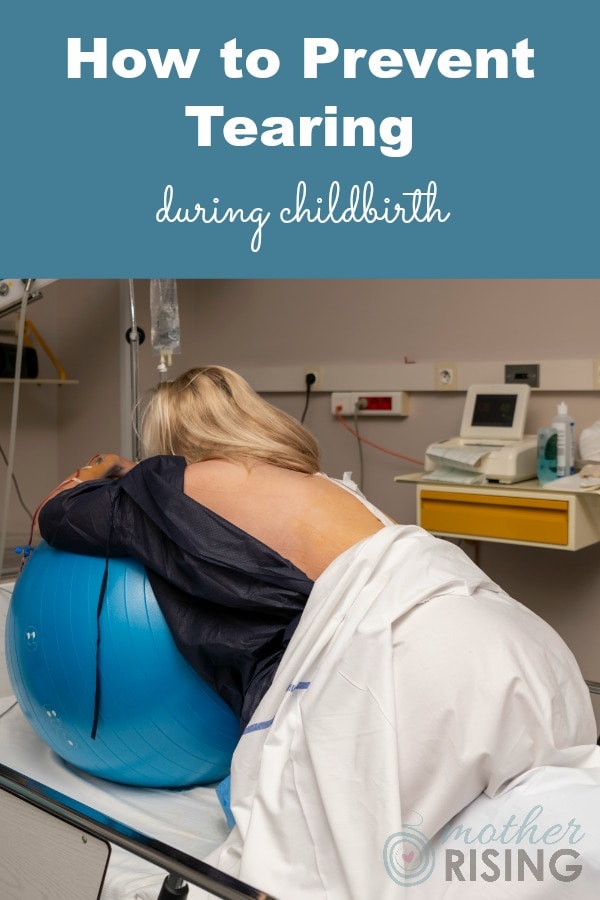
1. Choose Birthing Positions Wisely
Squatting Increases Tearing
The first thing we need to talk about is squatting. When in the squatting position, compared to being flat on the back, a woman’s pelvis opens 20-30% larger than it would otherwise. A greater outlet equals an easier birth. Isn’t that amazing?!
In conclusion, us Americans should squat and push our babies out just like the women in below video, right? Eh, maybe not.
You see, according to this study (and many of the midwives I know), pushing in the squatting position greatly increases the chance of tearing. Squatting, using birth stools, or even squatting with a squat bar, all lead to an increase in tearing.
In a nut shell, if you are a typical sedentary woman, you probably should re-think squatting during pushing. However, if you’re like the 1970s Southern Brazilian Indian women in the above video who squats to rest, your body may be able to handle squatting during pushing.
If you’re up to the challenge, visit Katy Bowman and teach your body to squat.
Side-Lying, Kneeling, Hands and Knees Decreases Tearing
The semi-reclined lithotomy position is what most women use when pushing at hospital births. Despite the convenience this position offers care providers, it’s one of the more common mistakes that don’t actually prevent tearing.
On the other hand, positions associated with a reduced risk of perineal damage are lateral positions like kneeling or a hands and knees position.
Midwife Thinking says,”I have noticed that when women are left to birth instinctively, they will often move from a squatting position – if they got into one – into a hands-knees position just before the head crowns.”
(That’s exactly what I did for my births. At some point in all my labors I squatted, but Gabriel was born in the side-lying position, Eden was born in the kneeling position and Mercy was hands and knees.)
If you really want to squat in labor, go for it, maybe just move to hands and knees just before crowning.
2. During Waterbirth, Continue to Support the Perineum
Unfortunately, it seems that waterbirth, although safe for mom and baby, has an association with tearing. I talked with my midwife, and she agreed with this. She definitely sees tearing with waterbirths.
Maybe this phenomenon happens because care providers are more hands off when a woman is in the water. Or maybe it’s because care providers aren’t pursuing gentle birth in any venue – land or water. Either way, I have some solutions.
Even when in the water, women should continue to use the information discussed in this article. The same techniques to prevent tearing on land can be used use in water.
- Choose lateral positions like kneeling or hands and knees.
- Provide firm support to the perineum with warm compresses.
- As much as possible, relax.
- After the head is born, wait.
When I gave birth in water I did tear, but it didn’t require stitches. A waterbirth isn’t necessarily a death sentence to your perineum, but it’s definitely something to take into consideration to prevent tearing during birth.
3. Rethink Perineal Massage
Perineal Massage During Pregnancy
Many women wonder if perineal massage during pregnancy can reduce tearing at birth. Perineal massage is when two lubricated fingers are placed in the vagina, and pushed down and to the sides to “pre-stretch” the skin prior to birth.
The evidence says that perineal massage during pregnancy will help a first time mom decrease the chance of an episiotomy. However, in my experience a woman is more or less likely to receive an episiotomy depending on who her care provider is.
If you are a first time mom and are at risk of an episiotomy, perineal massage during pregnancy may help. Hope on over to this post for more information and instructions on how to do perineal massage at home. And remember, it’s not really a massage. 😉
Perineal Massage During Pushing
When parents hear the term perineal massage they typically imagine something that’s done during pregnancy. However, many care providers provide perineal massage during the pushing stage of labor to help reduce tearing.
- While mom is pushing, her care provider will sit at the bottom of the hospital bed or stool, gowned up with gloves on.
- Next, they place their outstretched hand towards the nurse, who squirts lubricating jelly on their two fingers.
- After that they take their two fingers and place them in the vagina and push down and to the sides. On a clock, picture 3 o’clock to 6 o’clock, 6 o’clock to 9 o’clock, and then 9 o’clock to 6 o’clock.
- Rinse and repeat.

Watching this looks incredibly uncomfortable, almost painful. And if not painful, then by golly it’s gotta be totally distracting! Sometimes these moms get 30 to 60 minutes of this! The vulva becomes swollen, and leaves me feeling frustrated, mad, and sad.
And what really makes me frustrated is that nurses do this technique too when baby is crowning (before they call the doctor in). Nurses learn from doctors, assuming it’s an evidence based practice.
This hands on approach to supporting a perineum is one of the biggest pet peeves I have about hospital births.
Does Perineal Massage During Pushing Work?
My feelings and anecdotes aside, however, the research does not support the practice of perineal massage during pushing.
“Perineal massage in the second stage of labour did not have any effect on the likelihood of an intact perineum, perineal trauma, pain, or subsequent sexual, urinary or faecal outcomes, but was not harmful.” (SOURCE)
Use Warm Compresses to Prevent Tearing
So far what we’ve learned is that squatting and lying on our backs increases tearing, but a side-lying, kneeling, or hands and knees position decreases tearing. We’ve also learned that perineal massage is mostly worthless. So what else can we do to prevent tearing during birth?
Warm compresses have been shown to help decrease the incidence of tearing, which is wonderful news because using warm compresses is so simple.
How to use Warm Compresses at Birth
Supplies Needed: All you need is very warm water and washcloths. Here’s an inexpensive 24 pack of washcloths. A crockpot can help keep the water warm. Here’s an inexpensive 3 quart one that’s only $16.
Instructions: Take the washcloth, submerse it in the very warm water, wring it out, and then place it on the perineum with firm support while baby is crowning.

Warm Compresses at a Hospital Birth
I’ve seen this done in the hospital once and it was the OB’s idea (awesome!). He asked the nurse to grab a basin, fill it with warm water and get a stack of washcloths. It took about 2 minutes to setup and mom was so grateful for the extra support.
Ginger Compresses for Pushing
Using warm compresses to support the perineum is standard protocol at out of hospital births. At homebirths you will often find a crock-pot filled with warm water and ginger simmering, in preparation for the pushing stage. Ginger helps reduce inflammation and smells great too!
Once pushing and crowning begins, the crockpot is brought to wherever mom is.
TIP: Make sure the water isn’t hot. Once it reaches the desired temperature keep the crockpot on the warm setting. If it’s burning your hands when wringing out the washcloths, it’s too hot for mom’s perineum.
BONUS TIP: Keep a stack of washcloths handy. If a washcloth becomes soiled, you’ll have a fresh one right there. 5-10 washcloths will be plenty.
4. As Much As Possible, Relax
Tension plays a role with tearing during birth. Anything a woman can do to reduce tension and encourage relaxation will help the body to do what it instinctively knows to do. An easy way to think about this is to encourage a birthing environment that is conducive to oxytocin and eliminates adrenaline. The same environment that helps make a baby helps get the baby out. 🙂
The following are specific ideas ways to experience a more relaxing birth.
Eliminate Fear
When the body is fearful, it instinctively tenses to protect itself, which makes so much sense. What doesn’t make sense, however, is a tensed body during birth. One way to eliminate fear at birth is to to address fears prenatally, as much as possible, so as to avoid the fight or flight response during birth. It is possible to give birth without fear!
Relax the Jaw
During birth it may be difficult achieve total relaxation if all a woman hears is to “just relax”. Being more specific by pinpointing a specific body part is much more doable. Try saying the following to yourself, or a laboring mother, and you’ll likely be more helpful.
“A relaxed jaw is an open vagina.”
Try Kissing
A fun, and even more effective way to relax the jaw, is to kiss your partner. Not only will the jaw relax (hopefully!), but your body will release more feel-good, labor encouraging hormones like oxytocin and endorphins. According to Ina May Gaskin, she’s never seen a woman kissing her way through pushing that also tears during birth. If that’s not fabulous news, I’m not sure what is. 😉
In the video below, she explains how a chimpanzee, obviously without inhibitions, was using its hand/fingers to arouse itself while it was pushing its baby out (without tearing). Ina May believes that if we get the blood from our head, and move it to our vulva, we won’t tear because we’ll get REALLY BIG.
Don’t Forcefully Push
If a woman is pushing in a way that is forceful and unnatural, odds are she is experiencing coached pushing instead of spontaneous, undirected pushing. For a woman that is unmedicated, it’s best to be hands off physically, but also with directed pushing.
Coached or forced pushing may sound like a nurse instructing a woman to hold her breath while counting to ten, two to three times during each pushing contraction. It may also look like a doctor or midwife telling a woman to push after baby’s head is out, but between contractions, when she has no urge to push. (You can read more about this phenomenon below.)
Push with Great Strength, Slowly and Gently
Instead, it’s best to push instinctively with great strength, but slowly and gently. Before baby is crowning, it may be helpful to envision pushing with the strength of a gorilla. However, when baby is crowning, pushing slowly and gently is a great way to prevent tearing.
Listen to your care provider as they guide you through these intense moments of birth. You may want to push like a wild woman and “get the baby out”, but anything you can do to allow things to unfold slowly will help keep your lady bits intact.
5. After the Head is Born, Wait
Finally, I’d like to introduce an idea on preventing tearing that is generally not discussed or considered. Minimizing tearing during birth can be facilitated by care providers when they give the opportunity for baby to be born during two contractions – one for the head and the second for the body – and not just one.
After the head is born, by allowing the baby to instinctively rotate on its own and waiting for the mother to experience another involuntary push, the body will be given the space it needs to birth in a gentle way. (BACKED BY RESEARCH, Y’ALL —->>>>> SOURCE)
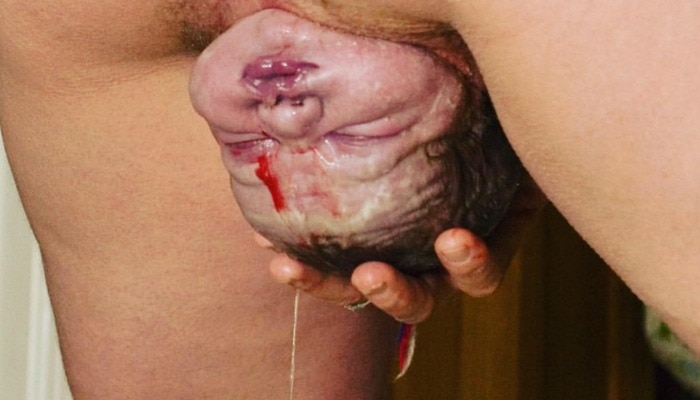
(Photo Credit: Indie Birth Association)
Having said that, I realize this is a tall ask of most care providers. You see, the standard procedure for most is to intervene if the baby’s isn’t completely born within 30 seconds after baby’s head.
I experienced this first hand at my son’s birth. I pushed my son’s head out during one contraction, that contraction went away (as they always do), and I stopped pushing while the rest of his body remained inside of me. My midwife, however, impressed it upon me that I should continue to push and get him out NOW. I remember her saying, “PUSH, Lindsey!”.
Based on how my midwife was acting, it seemed like an emergency. However, years later I looked at my records and there was no huge lapse in time after his head was born. My body was just waiting for the next contraction. I wasn’t given the option to wait for the next contraction because my midwife pulled my son out after that. That’s when I felt myself tear.
30, 30, 30
A few years later, I became a birth assistant and was given the opportunity to witness women and babies having the time and space to deliver baby’s head and body in more than one contraction. It was affirming to see this happen with no adverse affects.
However, I will say that if you’re accustomed to GETTING THE BABY OUT NOW, waiting for the next contraction after the head comes out, will feel like one of the longest waits of your life.
While baby’s between two worlds, it may be best to wait. During this challenging time, grab a cup of tea or sit on your hands. 😉 According to Barbara Harper, if after 30 seconds of waiting nothing happens, move mom into a new position. Every 30 seconds after that, try a new position until baby is born. 30, 30, 30.
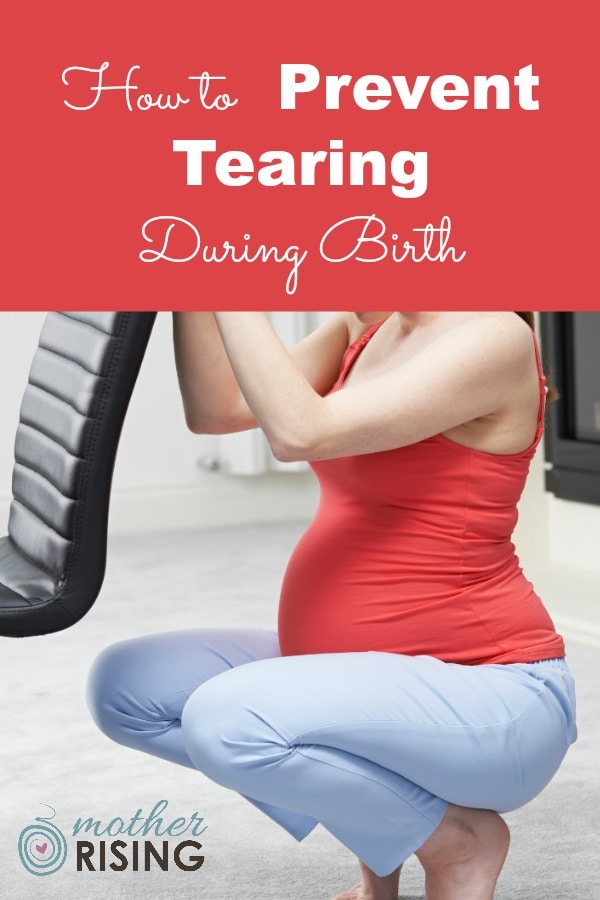
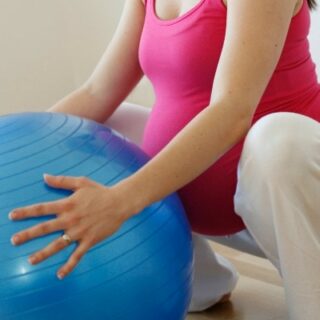
Tips for How to Prevent Tearing During Birth
Tearing during birth is a common fear of expectant mothers, with good reason, as a local OB once told me that the average first time mother experiences a second degree tear. It would seem that the use of perineal massage during pushing, the preferred method to prevent tearing during birth at the hospital, is not working. So then, what does work?
Materials
- wash cloths
- basin or crockpot
Instructions
- Choose helpful positions.
- Relax the body.
- Push slowly, with great strength.
- Eat healthy foods throughout pregnancy.
- Choose an amazing care provider.
- Avoid perineal massage during pushing.
- Use warm compresses.
- After the head is born, wait for the next contraction.
Notes
Perineal massage, when done during pregnancy, has been shown to reduce the risk of an episiotomy with first time moms. However, in my experience, this risk is drastically reduced by choosing the right care provider. Have a talk with your care provider and ask them about their episiotomy rates.
Recommended Products
As an Amazon Associate and member of other affiliate programs, I earn from qualifying purchases.



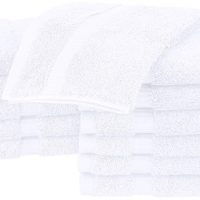

Ashley Jones
Thursday 24th of January 2019
Ever masturbate to lessen menstrual cramps? Totally works. It makes sense to me that it would help during labor. I just couldn't do that in front of people...no way.
Gabby Young
Monday 10th of December 2018
With my second baby, I gave birth in the upright position and it took about 30 minutes. I slightly tore but I think it was because of baby's position (the doctor told me baby "came out swinging" meaning one arm flew out so that may have caused the tear). Just FYI I did not tear with my first and my recovery with my second was just as easy as my first. All I took was ibuprofen and I didn't even need padsickles or numbing spray or anything extra.
Imani Abdul-Zahir
Saturday 17th of November 2018
"In a nut shell, if you are a typical sedentary civilized woman, you probably should re-think squatting during pushing. Unless you’re like the 1970s Southern Brazilian Indian women in the above video who SQUAT TO REST, your body likely can’t handle squatting during birth."
How is being sedentary in any way civilized?
A typical sedentary CIVILIZED woman as opposed to the Southern Brazilian Indian women? This an interesting comparison.
MIRANDA
Monday 5th of November 2018
Makes no damn difference if they have to cut you. Ouch :(
Marinda Griffin
Sunday 6th of May 2018
Can you use Ginger Essential oil instead of shaved ginger?
Lindsey
Monday 7th of May 2018
Honestly, I'm not sure! Ginger cut is way less potent than ginger EO! However, I see the draw. Ginger EO is much more portable.